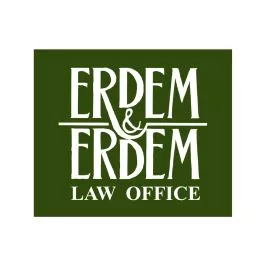Introduction
It is possible to face various types of tort in ordinary life. One of the most common examples of a tort is personal injury that a person has suffered. These may be traffic accidents, as well as occupational accidents, or poisoning, physical injuries in public places, such as hotels and restaurants.
Liability arising from personal injuries is regulated in the section entitled Debt Relations Arising from Torts, and in Article 49 of Turkish Code of Obligations numbered 6098 ("TCO"). As it is seen in the abovementioned section, there are four elements that comprise a tort in Turkish Law: These are negligence, unlawfulness, causal relation and damage. In cases for damages that are filed due to death or physical damage, the intention is to indemnify the damages of the aggrieved party, provided that these four elements are proven.
Compensation
In cases claiming damages that are filed in the Turkish civil courts as a result of personal injury, the court may award both pecuniary and non-pecuniary damages. Pursuant to Article 53 of the TCO, if death occurs as a result of the incident, the pecuniary damage items that may be claimed are funeral expenses, treatment costs if death does not occur immediately, and losses due to the decrease, or loss of capacity to work, and sustained loss suffered by persons who are deprived of the support of the deceased. If the result is physical damage, pursuant to Article 54 of the TCO, the pecuniary damage items that may be claimed are treatment costs, loss of earnings, losses due to the decrease, or loss of capacity to work, and losses that will occur due to future economic difficulties.
Pursuant to Article 50 of the TCO, the burden of proving the presence of damages and the fault suffered is on the aggrieved party. However, proof of these elements may not always be possible by the aggrieved party; therefore, in the trial process, the ratio of damages and defects may be determined through experts who have been appointed by the court. Another institution that the courts use in damages determination is the Council of Forensic Medicine ("CFM"). The determinations are carried out by various methods that have been established through the precedents of the Court of Cassation.
As a result of an accident, death may occur, as well as severe injuries and, as a result of these severe injuries, permanent disability and loss of capacity to work may occur. In the case of death and physical damages, in accordance with the precedents of the Court of Cassation, experts and the CFM generally use the PMF 1931 life table and, exceptionally, the TRH 2010 life table in actuarial calculations. In the case of calculations made in the event of death, compensation is calculated based on the possible life expectancy of the deceased, the income that likely would have been earned during this lifetime, the possible lifetime expectancies of the persons who are deprived of support -they may be spouses and/or children- and the income they will be deprived of, the likelihood of the remaining spouse remarrying, etc. and, additionally, the funeral expenses. In the case of a permanent disability, compensation is calculated based on the possible life of the casualty, the possible income that would have been earned if the accident had not occurred, disability ratio, the loss due to temporary incapacity of work, the permanent loss of capacity to work, and any treatment costs.
Limitations
Claims for damages resulting from personal injury must be requested within two years starting from the date on which the injured party has learned the damage and the responsible for such tort, and in any case within ten years from the date of incident. Otherwise, all claims for compensation arising from the actual incident shall become statute barred.
A special case related to the statute of limitations is that the act that causes personal injury may also be an offense under criminal law. If compensation arises from an act that requires punishment, and criminal law provides a longer limitation periods, compensation claims shall be subjected to limitation periods stipulated in the criminal law, and not to periods of two and ten years.
Employer Liability
Any third person associated with the perpetrator, as well as the perpetrator, can be held liable for the personal injuries mentioned in this article. The most common case is where an employer bears responsibility for the act. These cases are especially seen as liability for compensation by the owners of the business due to damages caused by employees working in restaurants and hotels.
Pursuant to Article 66 of the TCO, an employer is obliged to eliminate the damages that the employee perpetrates upon others during the course of his/her duties. In order to acquit itself of responsibility, the employer must prove that it exercised its due diligence enough so as to prevent the damage while choosing the employee, giving instructions, and while supervising its employee. Otherwise, the employer may also be held liable, together with the employee, who is the perpetrator, for damages caused to third parties.
The Relationship between the Decisions of Civil and Criminal Courts
Although compensation demands regarding personal injuries fall within the jurisdiction of the civil courts, some tortious acts may also constitute a criminal offense under criminal law, and a trial may be carried out in the criminal courts for the same act. In practice, before the judicial courts decide on compensation, they await the criminal proceedings to be concluded.
While civil courts are bound by some determinations of criminal courts regarding various elements of the compensation, there are also issues to be decided upon independently from the criminal court. Pursuant to Article 74 of the TCO, a civil judge is not bound by the criminal judge's decisions regarding acquittal, defect and its degree, the amount of damages, and the causality and the provisions of the criminal law with respect to liability. However, it may be taken from the dissenter of the Article that a civil judge is bound by all determinations, except for those subjects, as mentioned above. In the precedents of the Court of Cassation and in the doctrine, it is recognized that a civil judge will be bound by material facts determined in the criminal proceedings and, in particular, the determinations with regard to convictions and violations of the law.
In other words, decisions as to the existence of material events and prohibited acts constitute conclusive evidence in civil courts. Despite a final judgment on the existence of an incident in criminal courts, the same issue may not be brought up in civil courts, again. In this regard, for instance, the Court of Cassation states that the civil courts are bound by a sentence of imprisonment given by the criminal court; therefore, the civil courts must await the result of the case and render a verdict, accordingly1.
Conclusion
In cases for damages filed as a result of personal injuries, if death or physical damages occur resulting from an accident, the items of compensation shall vary. While determining the amount of defect and loss, the Court of Cassation designates the matters that are important in terms of uniformity of the decisions, and it provides predictability to the parties. Finally, it is also accepted by the precedents and in the doctrine that the civil judge is bound by some of the issues determined in the criminal proceedings.
Footnotes
1 Joint Civil Chambers of Court of Cassation No. 2013/4-1008 E. and 2014/490 K., 09.04.2014.
The content of this article is intended to provide a general guide to the subject matter. Specialist advice should be sought about your specific circumstances.

